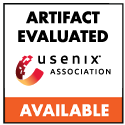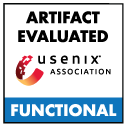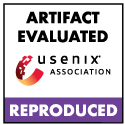Kevin Morio and Ilkan Esiyok, CISPA Helmholtz Center for Information Security; Dennis Jackson, Mozilla; Robert Künnemann, CISPA Helmholtz Center for Information Security
We present the first formal analysis and comparison of the security of the two most widely deployed exposure notification systems, ROBERT and the Google and Apple Exposure Notification (GAEN) framework.
ROBERT is the most popular instalment of the centralised approach to exposure notification, in which the risk score is computed by a central server. GAEN, in contrast, follows the decentralised approach, where the user's phone calculates the risk. The relative merits of centralised and decentralised systems have proven to be a controversial question. The majority of the previous analyses have focused on the privacy implications of these systems, ours is the first formal analysis to evaluate the security of the deployed systems—the absence of false risk alerts.
We model the French deployment of ROBERT and the most widely deployed GAEN variant, Germany's Corona-Warn-App. We isolate the precise conditions under which these systems prevent false alerts. We determine exactly how an adversary can subvert the system via network and Bluetooth sniffing, database leakage or the compromise of phones, back-end systems and health authorities. We also investigate the security of the original specification of the DP3T protocol, in order to identify gaps between the proposed scheme and its ultimate deployment.
We find a total of 27 attack patterns, including many that distinguish the centralised from the decentralised approach, as well as attacks on the authorisation procedure that differentiate all three protocols. Our results suggest that ROBERT's centralised design is more vulnerable against both opportunistic and highly resourced attackers trying to perform mass-notification attacks.
Open Access Media
USENIX is committed to Open Access to the research presented at our events. Papers and proceedings are freely available to everyone once the event begins. Any video, audio, and/or slides that are posted after the event are also free and open to everyone. Support USENIX and our commitment to Open Access.
author = {Kevin Morio and Ilkan Esiyok and Dennis Jackson and Robert K{\"u}nnemann},
title = {Automated Security Analysis of Exposure Notification Systems},
booktitle = {32nd USENIX Security Symposium (USENIX Security 23)},
year = {2023},
isbn = {978-1-939133-37-3},
address = {Anaheim, CA},
pages = {6593--6610},
url = {https://www.usenix.org/conference/usenixsecurity23/presentation/morio},
publisher = {USENIX Association},
month = aug
}



